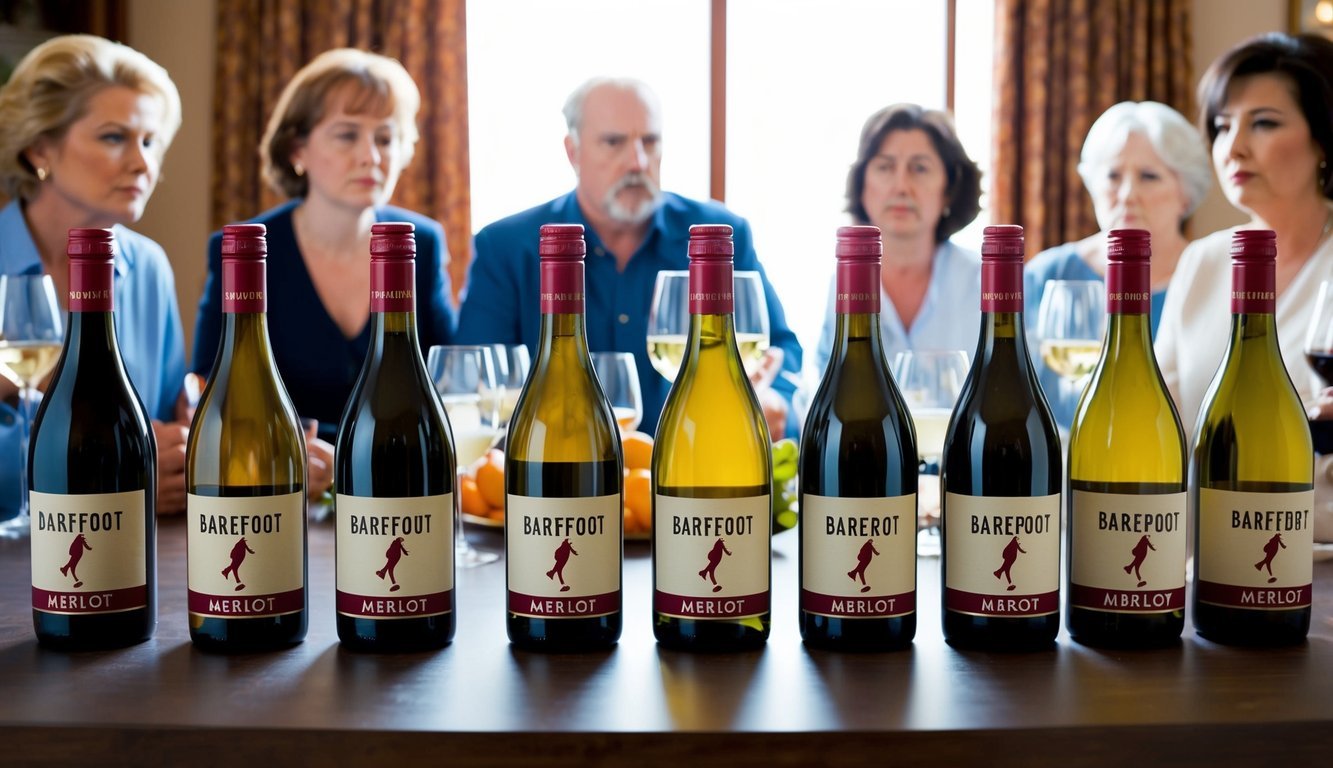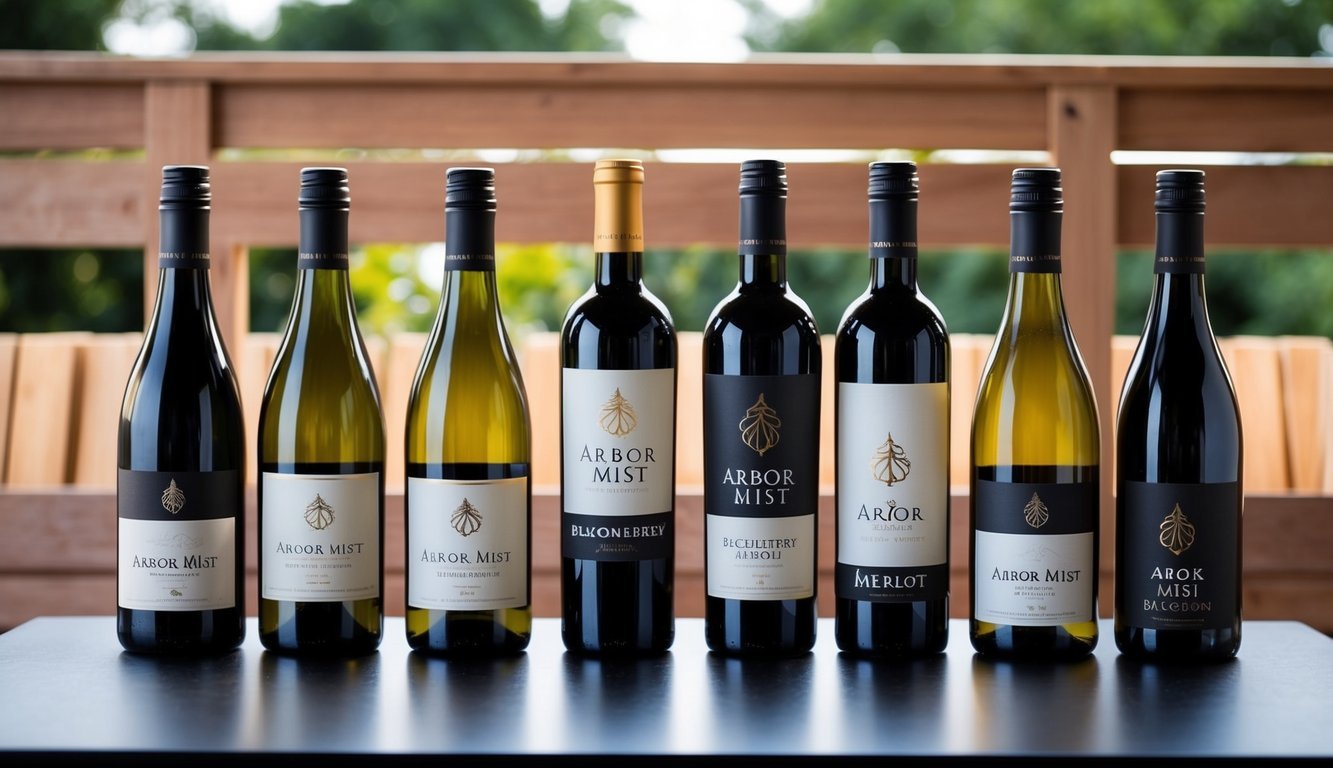Choosing the right wine to impress your in-laws can be a daunting task, especially if they’re particular about their drinks.
You want to make a good impression, but navigating the world of wine can feel like walking through a minefield.
One wrong move, and you might find yourself on the receiving end of disapproving looks or subtle critiques.
To help you avoid any wine-related faux pas, it’s essential to know which bottles to steer clear of when trying to win over your discerning in-laws. By understanding what not to bring, you’ll be better equipped to select a wine that will earn their approval and maybe even spark some engaging conversation around the dinner table.
Let’s explore some of the worst offenders that could potentially undermine your efforts to impress.
1) Yellow Tail Shiraz
Yellow Tail Shiraz might seem like a safe choice, but it’s actually a risky pick for impressing wine-savvy in-laws.
This Australian brand has gained popularity for its affordability and accessibility, but it lacks the complexity that discerning palates crave.
The wine’s flavor profile is simple and straightforward, with notes of vanilla, black berries, and plum.
While this might appeal to casual drinkers, it falls short when scrutinized by those with more refined tastes.
Your in-laws might find Yellow Tail Shiraz too sweet and lacking in depth.
Its bold, fruit-forward style can come across as unbalanced and overpowering, missing the nuanced characteristics of higher-quality Shiraz wines.
Remember, this wine is designed to be consumed young.
Serving an older vintage won’t improve its quality and may even detract from the experience.
While Yellow Tail has its place as an everyday wine, it’s not the best choice for making a lasting impression on your snobby in-laws.
You’d be better off selecting a more prestigious Shiraz or exploring other varietals to showcase your wine knowledge.
2) Barefoot Merlot

Barefoot Merlot might seem like a safe choice for impressing your in-laws, but it’s likely to fall flat with wine snobs.
This budget-friendly wine often lacks the complexity and depth that discerning palates crave.
You’ll find it has a simple, fruity flavor profile that can come across as one-dimensional.
The tannins are typically soft, which some may appreciate, but others might find it lacks structure.
While Barefoot Merlot can be smooth and easy-drinking, it may not stand up to scrutiny from those who prefer more nuanced wines.
Its mass-produced nature is often apparent in the taste.
If your in-laws are particular about their wines, they might pick up on the slightly sweet undertones that are characteristic of many Barefoot varieties.
This sweetness can be off-putting for those expecting a drier, more traditional Merlot.
Consider that serving this wine could signal to your in-laws that you haven’t put much thought into your selection.
For snobby in-laws, presentation matters, and the recognizable Barefoot label might not make the impression you’re hoping for.
3) Gato Negro Cabernet Sauvignon

You might think you’re getting a great deal with Gato Negro Cabernet Sauvignon, but your wine-savvy in-laws won’t be impressed.
This budget-friendly Chilean wine is a common sight on supermarket shelves.
While it’s not terrible for its price point, it lacks the complexity and depth that discerning palates crave.
You’ll find basic notes of dark berries and perhaps a hint of chocolate, but don’t expect much more.
The wine’s straightforward flavor profile and affordable price tag make it better suited for casual weeknight dinners than special family gatherings.
Your in-laws might raise an eyebrow at its mass-produced nature.
If you’re looking to make a good impression, it’s best to skip the Gato Negro and opt for a more prestigious Cabernet Sauvignon.
Your in-laws will likely appreciate a wine with more nuanced flavors and a higher pedigree.
Remember, sometimes it’s worth spending a bit more to show you’ve put thought into your wine selection.
Your efforts won’t go unnoticed by those with refined tastes.
4) Sutter Home White Zinfandel

Sutter Home White Zinfandel is a wine you’ll want to avoid when trying to impress your wine-savvy in-laws.
This blush wine is often considered the epitome of cheap, unsophisticated drinking.
While it might be refreshing on a hot summer day, it lacks the complexity and depth that discerning wine drinkers appreciate.
Its overly sweet flavor profile and simple fruit notes won’t earn you any points with those who prefer drier, more nuanced wines.
Serving temperatures between 45-50°F may enhance its strawberry flavors, but chilling won’t mask its fundamental shortcomings.
Your in-laws might view bringing this wine as a sign you didn’t put much thought or effort into your selection.
White Zinfandel’s reputation as a “beginner’s wine” could make you appear inexperienced in the world of wine.
Its mass-market appeal and low price point further detract from its ability to impress.
For a family gathering where you’re aiming to make a good impression, it’s best to steer clear of Sutter Home White Zinfandel.
Your in-laws are likely to prefer something with more character and sophistication.
5) Arbor Mist Blackberry Merlot

Arbor Mist Blackberry Merlot might seem like a safe choice for your in-laws, but it’s far from impressive.
This budget-friendly wine blends Merlot with blackberry flavors, creating a sweet and fruity drink.
While it’s popular among casual wine drinkers, your snobby in-laws will likely turn up their noses at this selection.
The artificial fruit flavoring and high sugar content mask the true essence of the Merlot grape.
Wine connoisseurs often criticize Arbor Mist for its lack of complexity and depth.
Your in-laws might see it as a beginner’s wine, not suited for sophisticated palates.
Despite its affordability and approachable taste, bringing this to a family dinner could backfire.
Your in-laws might question your wine knowledge and judge your choice harshly.
If you’re aiming to impress, it’s best to steer clear of Arbor Mist Blackberry Merlot.
Opt for a traditional, unadulterated Merlot instead to show you appreciate the nuances of wine.
6) Franzia Sunset Blush

Bringing Franzia Sunset Blush to impress your snobby in-laws is a surefire way to raise eyebrows—and not in a good way.
This boxed wine screams “budget” louder than a clearance sale announcement.
With its delicate pink hue and strawberry flavors, Sunset Blush might seem like a fun choice for a casual picnic.
But your in-laws are likely to view it as more suited for a college dorm room than a sophisticated family dinner.
The lower alcohol content compared to bottled wines won’t win you any points either.
Your wine connoisseur relatives will probably see it as watered-down and lacking complexity.
While Franzia touts its eco-friendly packaging, that’s unlikely to sway judgmental in-laws focused on taste and presentation.
The box itself is a dead giveaway that you’ve opted for quantity over quality.
If you’re aiming to impress, steer clear of this sweet, light wine.
Your in-laws will likely expect something more refined and traditional.
Save the Sunset Blush for casual gatherings with less discerning guests.
7) Andre Cold Duck

If you’re looking to impress your wine-snob in-laws, Andre Cold Duck is definitely not the way to go.
This sweet, sparkling red wine is known for its cheap price tag and less-than-stellar reputation among wine enthusiasts.
Andre Cold Duck combines fruity notes with a fizzy taste, making it more suitable for casual gatherings or mixers than formal family dinners.
It’s often associated with college parties and budget-friendly celebrations.
The wine’s origins can be traced back to the 1970s when it gained popularity as an inexpensive option for those seeking a bubbly drink.
Its sweetness comes from the use of Concord grapes, which are typically found in grape juice rather than fine wines.
While Andre Cold Duck might be fun for a casual night in, it’s unlikely to win any points with discerning in-laws.
The wine’s low quality and mass-produced nature make it a poor choice for impressing those with refined palates.
Understanding Wine Preferences

Wine preferences can vary widely, especially among more discerning drinkers.
Knowing what sophisticated palates look for and which mistakes to avoid can help you choose a bottle that impresses.
Characteristics Snobby Wine Lovers Appreciate
Complexity is key for wine connoisseurs.
They often seek out wines with layered flavors that evolve as you sip.
Balance is another crucial factor – no single element should overpower the others.
Wines with good structure, including appropriate tannins and acidity, are highly valued.
Age-worthiness is also important, as many collectors prize wines that improve over time.
Terroir, or sense of place, can be a major selling point.
Wines that clearly express their origin are often favored by enthusiasts.
Rarity and uniqueness can add appeal.
Limited production wines or those from lesser-known regions may catch a snob’s attention.
Common Wine Faux Pas to Avoid
Serving temperature matters more than you might think.
Reds shouldn’t be too warm, and whites shouldn’t be ice cold.
Each varietal has an ideal temperature range.
Glassware can make or break the experience.
Using the wrong type of glass for a particular wine is a rookie mistake.
Decanting isn’t just for show.
It can significantly improve some wines, especially younger reds.
Not decanting when appropriate is a missed opportunity.
Pairing missteps can ruin both the wine and the meal.
Avoid clashing flavors or overpowering delicate wines with strong foods.
Don’t overlook proper storage.
Wines kept in less-than-ideal conditions may deteriorate quickly, disappointing even if they were initially high-quality.
Alternatives to Impress

Instead of relying on expensive or trendy wines, focus on thoughtful selections that showcase your knowledge and consideration.
Pair wines intelligently with meals to create harmonious flavor combinations.
Choosing Wines for Impressing
Look for unique, lesser-known varietals or regions that offer great value.
Research the winemaker’s story or sustainable practices to share interesting tidbits.
Opt for a vertical tasting of different vintages from the same producer to demonstrate your wine knowledge.
Consider bringing a local wine from your area as a conversation starter.
Choose wines that have personal significance or memories attached to showcase your thoughtfulness.
Don’t shy away from affordably priced options if they’re high quality.
Many wine professionals appreciate discovering hidden gems at lower price points.
Pairing Wine with Meals
Pay attention to the menu and select wines that complement the flavors of each course.
For appetizers, try a crisp white or sparkling wine to awaken the palate.
Match the weight of the wine to the richness of the main dish.
A bold red pairs well with hearty meats, while a medium-bodied white suits lighter proteins.
Consider the sauce or preparation method when choosing a wine.
Acidic wines cut through creamy sauces, while fruity options balance spicy dishes.
For dessert, opt for a wine slightly sweeter than the dish to avoid a clash of flavors.
A late-harvest Riesling or tawny port can be delightful choices.

